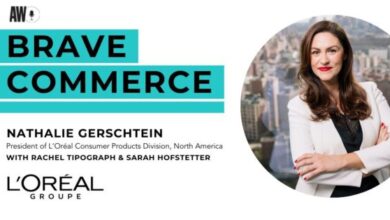
Finally, there’s the LGBTQIA+ representation—or, rather, the prevailing absence of it. Of the 39 people in last night’s ads for whom Alltold’s AI could detect a visible sexual orientation, there were two lesbians. The other 37 people were heterosexual.
The limits of AI
Why were so many marginalized groups poorly represented last night? In fairness, some of the statistical picture comes from the limitations of AI, at least as it stands now. Powerful as the tool is, it’s confined to observable traits and can therefore miss subtle but important cues and nuances.
In the realm of larger-size Americans, for example, while there were none in Dove’s “Hard Knocks,” the spot nonetheless sent a galvanizing message about the importance of body positivity. The Ogilvy-produced ad featured a screen card explaining that 45% of girls quit sports by the age of 14 because of low body confidence.
It’s a similar story with the e.l.f. spot, where two gay men sat in the front row of the jury box. (Drag queen Heidi N Closet is played by Trevien Anthonie Cheek, who is, like Benito Skinner, openly gay.) Sexual orientation, Gregory said, is “one of the tricky ones. When we make a sexual orientation annotation, we need to see somebody in the context of a partner or intimate or romantic interaction. In ads, we don’t see a lot of that because it’s short form content.”
Blame central casting
Fair enough. But what about those other groups—older people, larger people, people with disabilities—who didn’t get much love from the cameras?
“This year’s Super Bowl had a stronger representation of diversity than in years past, but with all the celebrity razzle dazzle, it was easy to miss,” suggested Kumi Croom, managing director of ad shop Duncan Channon.
Another reason we didn’t see more diverse characters is simply because the brands didn’t cast them—or at least, the more marginalized of the marginalized.
“There have been so many movements around gender equity, gender equality, now racial justice—so companies focus on that type of equality and inclusion—that’s when we start to see more screen time, more people being cast in those roles,” Gregory said. “We don’t have a similar movement for inclusion for older adults or people who have larger body sizes.”
And why not? “The importance/impact of diversity and inclusion is a two-part issue in the creative world,” ventured Jea Hyun Reece, design director for Moving Brands. “There is a need for diversity and inclusion in the concepting/ideating room, and then there is a need for diversity and inclusion representation within the consumer-facing communications. If you have diversity in the hidden portion, then you will assuredly get diversity in the public portion.”





